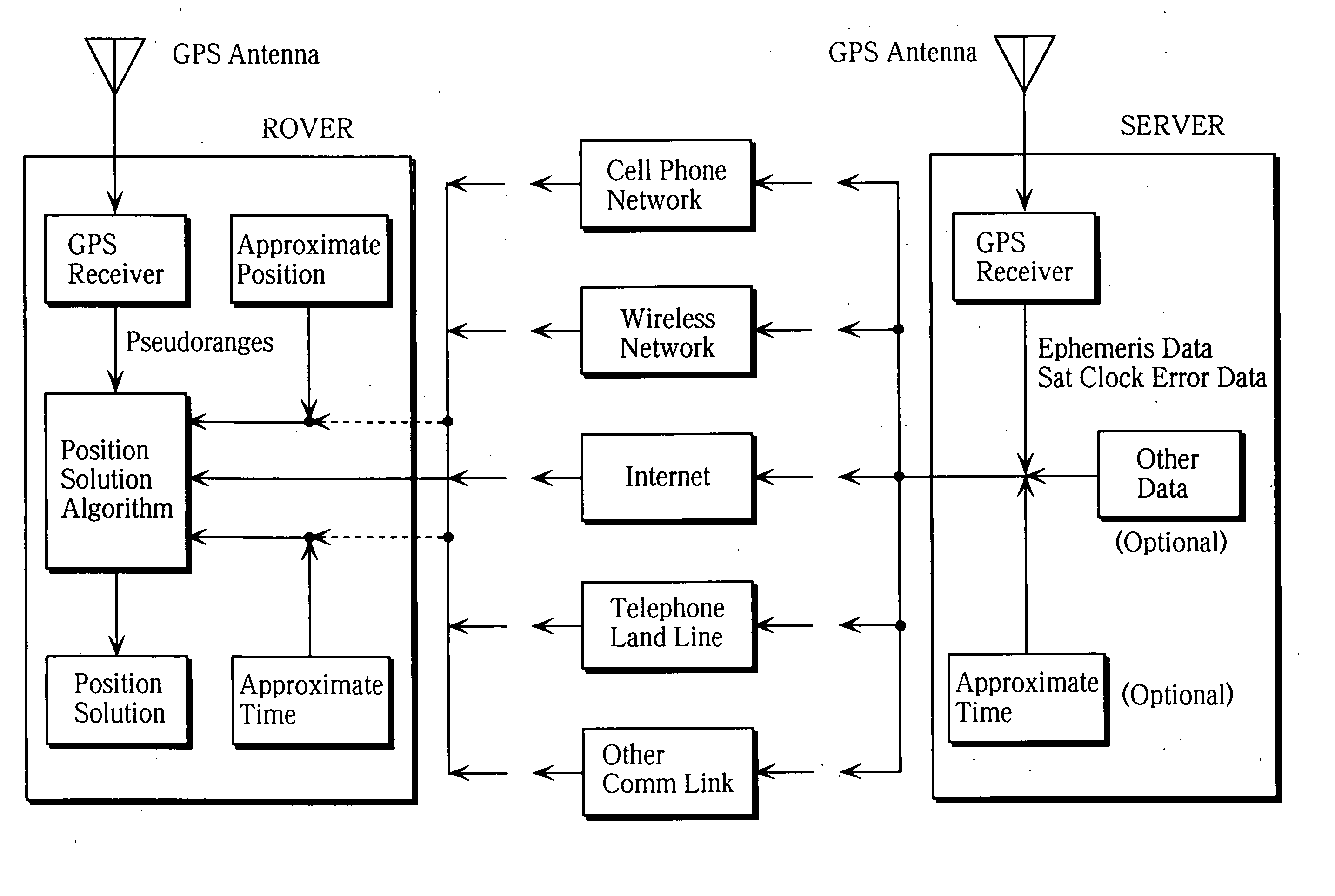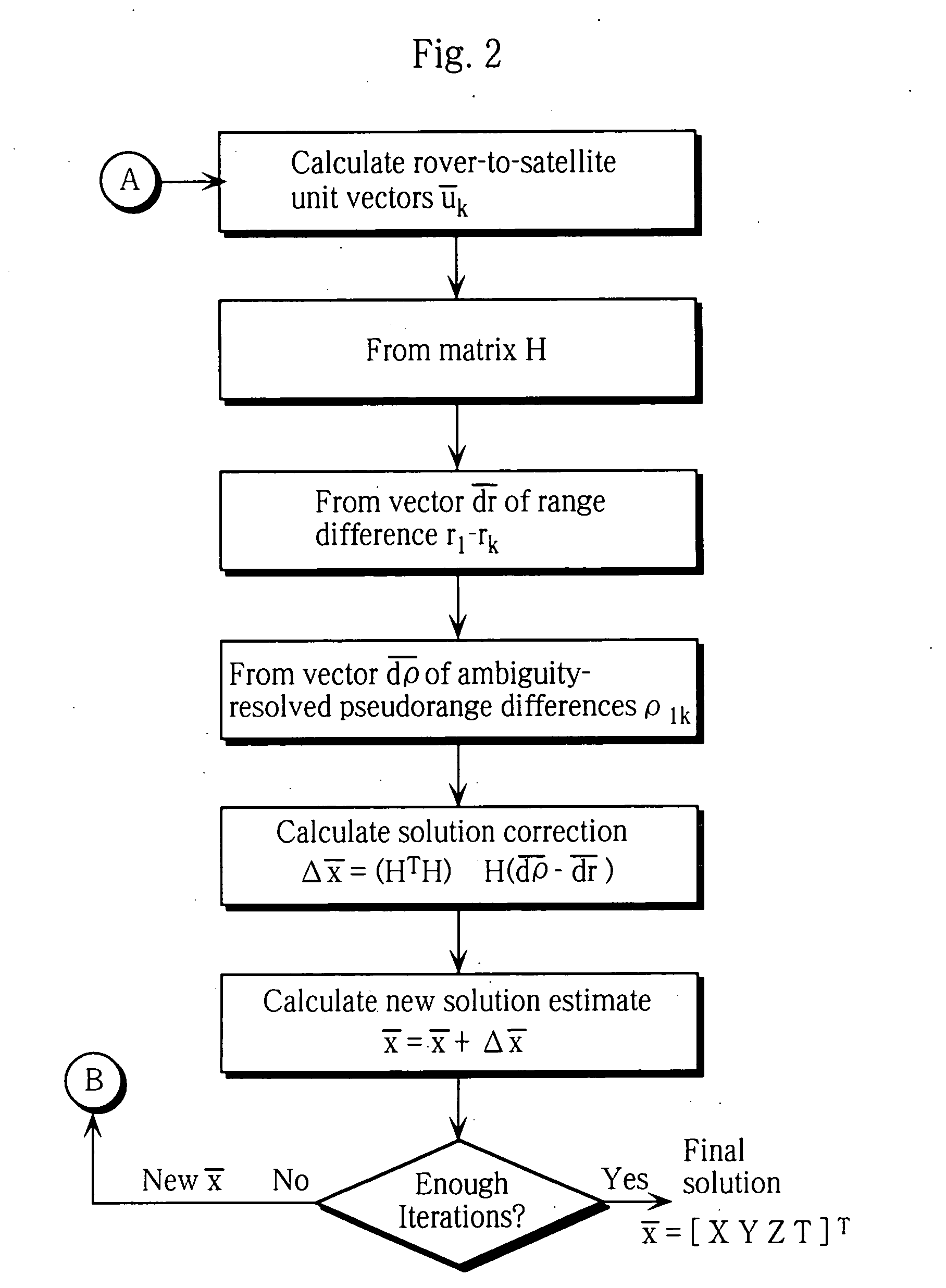Process for accurate location determination in GPS positioning system
a positioning system and location technology, applied in satellite radio beaconing, measurement devices, instruments, etc., can solve the problems of difficult to find, difficult to find, and difficult to find,
- Summary
- Abstract
- Description
- Claims
- Application Information
AI Technical Summary
Problems solved by technology
Method used
Image
Examples
Embodiment Construction
[0037] The present invention solves the problem of obtaining unambiguous time, with an error generally not exceeding several milliseconds, by using at least one additional satellite beyond what is normally needed for positioning. The rover obtains time neither from the navigation message nor from the server. Instead, time is treated as an additional variable which can be determined directly from the navigation solution, although not as accurately as that based on timing data contained in the navigation message. Navigation solutions in unassisted receivers generally solve for position (three coordinates X, Y, and Z) and receiver clock error B. In such receivers the solution for receiver clock error B can be used to calibrate the receiver clock and thereby obtain very accurate time, but to get this degree of accuracy the navigation solution requires that the receiver read timing data directly from the GPS signal. In contrast, the present invention includes unambiguous time t as the fo...
PUM
 Login to View More
Login to View More Abstract
Description
Claims
Application Information
 Login to View More
Login to View More - R&D
- Intellectual Property
- Life Sciences
- Materials
- Tech Scout
- Unparalleled Data Quality
- Higher Quality Content
- 60% Fewer Hallucinations
Browse by: Latest US Patents, China's latest patents, Technical Efficacy Thesaurus, Application Domain, Technology Topic, Popular Technical Reports.
© 2025 PatSnap. All rights reserved.Legal|Privacy policy|Modern Slavery Act Transparency Statement|Sitemap|About US| Contact US: help@patsnap.com



